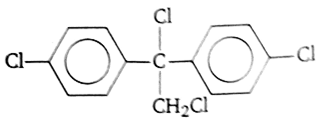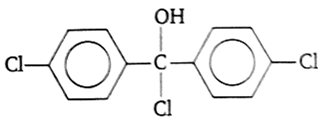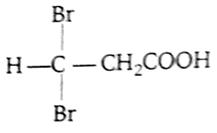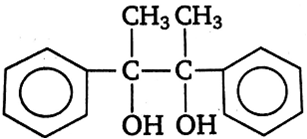 Multiple Choice Questions
Multiple Choice QuestionsWhich one of the following esters gets hydrolysed most easily under alkaline conditions?




The oxidation of benzene by V2O5 in the presence of air produces
benzoic anhydride
maleic anhydride
benzoic acid
benzoic acid
Acetamide is treated with the following reagents separately. Which one of these would yield methylamine?Â
NaOH - Br2
Sodalime
Hot conc. H2SO4
Hot conc. H2SO4
Among the given compounds, the most susceptible to nucleophilic attack at the carbonyl group isÂ
CH3COOCH3
CH3CONH2
CH3COOCOCH3
CH3COOCOCH3
D.
CH3COOCOCH3
Lesser the electron density of acyl carbon atom, more will be the susceptibility of a nucleophile to attack it.Â
The Cl atom has strong - I effect and weakest +R effect because of the weak π-bond between the small sized C- atom and large sized Cl atom. Thus, in CH3COCl, acyl carbon has least electron density and hence, more susceptible for nucleophilic attack.
Trichloroacetaldehyde, CCl3CHO reacts with chlorobenzene in presence of sulphuric acid and produces




Propionic acid with Br2-P yields a dibromo product. Its structure would be
CH2Br - CHBr -COOH

CH2-Br-CH2-COBr
CH2-Br-CH2-COBr
Acetophenone when reacted with a base, C2H5ONa, yields a stable compound which has the structure



![]()
The relative reactivities of acyl compounds towards of nucleophilic substitution are in the order ofÂ
Acyl chloride> Acid anhydride> Ester> Amide
Ester > Acyl chloride> Amide > Acid anhydride
Acid anhydride > Amide > Ester> Acyl chloride
Acyl chloride > Ester > Acid anhydride > Amide
Which of the following represents the correct order of the acidity in the given compounds?
H3CCOOH > BrCH2COOH > ClCH2COOH > FCH2COOH
FCH2COOH > CH3COOH >BrCH2COOH > ClCH2COOH
BrCH2COOH > ClCH2COOH > FCH2COOH >CH3COOH
BrCH2COOH > ClCH2COOH > FCH2COOH >CH3COOH
